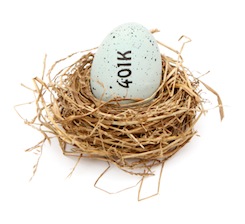Selecting The Right Senior Housing For Your Parents
Jul/15/2013 02:18 PM

Watching our parents decline in health can be hard enough, but having to decide the level of care they need, the cost of that care and the best way to deliver it can be nearly impossible.
Most seniors want to retain their independence and live in their homes for as long as possible. Some need a little more assistance and some need more intensive care. Here’s a look at three housing options for your aging parents: in-home care, assisted living facilities and nursing homes.
Read More About: Selecting The Right Senior Housing For Your Parents...
Managing Your Aging Parents' Finances
Jun/08/2012 11:37 AM

Are your elderly parents having trouble staying organized? Do they forget common things like important dates, or ask for the same information over and over?
Are there reminder notes or memory aides scattered around their home? If so, your parents could be struggling with memory loss.
Among the many difficulties you and your parents will have to face in such a situation is managing their finances...
Read More About: Managing Your Aging Parents' Finances...
Why You Need A Will!
Sep/08/2011 03:01 PM

You know the saying about the two things we can’t escape, so why not protect your wishes and your heirs when that fateful day arrives? (No, not April 15.) Everyone will die at some point, which means that everyone needs to have a will. Wills give you a voice after your death—and sometimes before—to help protect your wishes and those you care about.
Read More About: Why You Need a Will!
Reverse Mortgage Pros & Cons...
Jun/14/2011 02:44 PM

Seniors are feeling just as cash-strapped as the rest of Americans right now. Many have lost a good portion of their retirement fund, some have lost their jobs, and others are feeling the pinch of rising health-care costs. The idea of tapping into your home equity through a reverse mortgage can sound appealing, but it isn’t right for everyone.
Reverse mortgages can provide seniors with some new financial options, but there are drawbacks. Learn what you should take into consideration before taking out a reverse mortgage.
Read More About: Reverse Mortgages: Pros and Cons
How Much Do I Need To Save For Retirement?
Apr/14/2011 03:54 PM

When beginning to plan for retirement, often the first question people ask is: How much do I need to save?
Before this can really be answered, you’ll need to do some thoughtful planning about the type of retirement you are envisioning; but, in general, you should expect to have saved enough to generate retirement income of anywhere from 70 percent to 120 percent of your current income.
Before your eyes pop out of their sockets, it’s important to keep in mind that how much you need for your retirement savings really depends on your situation.
This resource guide article will provide you some tools and tips for calculating your retirement savings number.
Read More About: How Much Do I Need To Save For Retirement?
Catch Up On Retirement Savings...
Feb/10/2011 02:33 PM

Investments are down. Home equity has shrunk. Paychecks have diminished—if you’re lucky enough to still have one.
You may have experienced any or all of these situations over the past few years. But there are ways to get your retirement savings back on track—no matter what your age.
With April 15th fast approaching, now is the time to take advantage of some of the tips mentioned in this article.
Read More About: How To Catch Up On Your Retirement Savings...
Investing for Beginners: The Basics
Feb/25/2010 02:31 PM

Investing doesn’t have to be complicated. Here are the basics of investing for beginners.
Often, people will put off investing their money because it seems too complex or think that it requires a large starting sum. But this doesn’t have to be the case. Here’s a basic guide for those who are new to investing—and it doesn’t require a large bankroll.
Determine your investment strategy
Are you investing for a long-term goal, such as retirement, or for something a little closer, like buying your first home? Are you ok with making riskier investments, which can yield greater returns, or does the thought of a market slip give you the cold sweats? Do you want to be actively involved in managing your investments or would you prefer a more passive role? The answers to these questions will help determine if you should invest in stocks, mutual funds, or bonds—and if you should hire a fund manager or broker, or go it on your own.
Related Articles:
Retirement Savings: What is a Roth IRA?
Feb/15/2010 02:21 PM

The IRA rules around income limitations for converting Traditional IRA money to a Roth IRA have changed. Learn more about the Roth IRA conversion changes and how they might benefit your retirement savings.
When funding your retirement savings, it’s a good idea to diversify, using the various retirement investment options available to you. And now, those with high incomes are able to take advantage of the benefits of a Roth IRA, thanks to changing income rules around converting money from a Traditional IRA to a Roth IRA.
What is the difference between a Traditional IRA and a Roth IRA?
The most basic difference between these two individual retirement accounts has to do with when you pay taxes. With a Traditional IRA, money you contribute may be tax-free while money you withdraw in retirement is taxed. A Roth IRA is the opposite—money you contribute is after tax and money you withdraw in retirement is tax-free. This, along with other differences, can make it valuable to have both of these retirement savings accounts as part of your overall retirement plan.
Read More About: Is A Roth IRA Conversion Right For You?
Related Articles:
Retirement Savings: What Is A 401K
Feb/08/2010 02:10 PM

How does a 401(k) work? What are the benefits of having a 401(k) plan? Learn more about the 401(k) to see if it should be a part of your retirement plan.
Of all the various retirement investment options available to workers, the 401(k) is probably the most well-known. The 401(k) plan, named for the section of the Internal Revenue Code which authorized the use of the plan in 1978, is a retirement plan offered through an employer.
These plans gained popularity among employers in the 1980s as an alternative to pensions and are equally popular with employees thanks to their portability, employer matching contributions, and increased control over how money is invested.
How Does a 401K Work?
Contributions are automatically deducted—before tax—from an employee’s paycheck, which makes it one of the easiest ways to increase your retirement savings. Employees select the percentage of pay they want deducted from each paycheck and funds are automatically deposited into the employee’s 401(k) plan. Account holders are able to choose from a range of investment options within the 401(k), which are composed of stocks, bonds, and money market investments.
Read More about: What is a 401K?
Related Articles:
Retirement Savings:What Is an IRA?
Feb/01/2010 01:58 PM

How does an IRA retirement plan work? What are the benefits of having an IRA? Learn more about IRAs to see if it should be a part of your retirement savings.
So you’ve got a 401(k) through your workplace and are actively contributing. Good for you! But when saving for retirement, it’s a good idea to take advantage of additional retirement investment options as well. Another way to boost your retirement savings is to open an IRA, or Individual Retirement Account.
How does an IRA retirement plan work?
Unlike a 401(k) plan, which you may be able to open through your employer, an IRA is a retirement plan that you open on your own through any large financial institution. Typically, IRA providers offer a broad range of investment options—including mutual funds, stocks and bonds—so you can diversify your retirement portfolio to best suit your needs.
Like a 401(k) plan, dollars can be invested either through a Traditional or Roth plan. The biggest difference between the two has to do with when your investments are taxed. With a Traditional IRA, you pay taxes when you withdraw your funds in retirement. (However, in some cases, your contributions might be tax free.) The Roth IRA is the opposite—contributions are made with after-tax dollars but withdrawals made in retirement are tax-free. For both plans, you can begin making qualified distributions at age 59½. (With a Roth you must also have had the account for five years.)
Read More About: What Is An IRA?
Related Articles:
Retirement Planning: Investment Options
Jan/31/2010 12:57 PM

In the other articles of this series, you developed a retirement plan, estimated how much you'll need in retirement savings, and learned a few tips to save more for your retirement fund. Now that you have freed up a few extra dollars, where are you going to put them? Luckily, there are a number of options available to you.
Thus, in the final article in this retirement series, we will give you a brief overview of some of the more common retirement investment options.
Talking with your banker, the benefits department of your company, or a financial advisor can help you decide which is right for you. In general, the key is to diversify and take advantage of as many options as you can as they all offer their own pros and cons.
Read More about: Investment Options for Retirement Savings
Related Articles:
- Retirement Planning: Start the Process!
- Retirement Planning: How much do I need to save?
- Retirement Planning: Tips for Saving
- What is an IRA?
- What is a 401k plan?
- Is a Roth IRA conversion right for you?
- Investing for beginners: The basics of how to invest your money
Retirement Planning: Tips for saving
Jan/25/2010 12:45 PM

Now that we have started you thinking about your retirement plan and calculated how much you’ll need in retirement savings, it’s time to increase those savings.
The good news is that it’s never too early or too late to start saving for retirement. You don’t have to wait until you’re approaching retirement to make changes in your spending habits to stash extra dollars into your retirement fund account. And if you are 50 or older, you may be able to take advantage of catch-up opportunities that could potentially increase your retirement income.
There are quite a few ways to increase your savings: Read More about: How to Increase Your Retirement Savings
Retirement Planning: How Much to Save?
Jan/18/2010 12:35 PM

When beginning to plan for retirement, often the first question people ask is: How much do I need to save?
Before this can really be answered, you'll need to do some thoughtful planning about the type of retirement you are envisioning; but, in general, you should expect to have saved enough to generate retirement income of anywhere from 70 percent to 120 percent of your current income.
Before your eyes pop out of their sockets, it's important to keep in mind that how much you need for your retirement savings really depends on your situation.
The second in the series of articles will provide you with some tools and tips for calculating your retirement savings number.
Read More about: How Much Do I Need to Save for Retirement?
Retirement Planning: Start Now!
Jan/11/2010 03:48 PM

Do you have a retirement plan?
If you were to ask a number of people what they were saving for, you’d get a variety of answers: the latest tech gadget, a new car, a dream vacation, or even those splurge shoes. But the answer you most likely won’t get? Retirement.
Saving for retirement isn’t fun, but it is necessary and something we all need to be actively involved in. Unfortunately, only 60 percent of workers are currently saving for retirement and only 13 percent are confident about having enough money for when they do retire.
Neighborhood Link has created a four-part article series meant to take some of the confusion out of retirement planning by helping you to start thinking about your retirement goals, to estimate how much you’ll need in retirement funds, to find ways to save for retirement, and to help you determine what retirement investment options might work best for you.
The first step in retirement planning is to take time to consider your dream retirement. Will you continue to work? Where will you live? Do you plan to travel? Determining how you want to spend your newly-found free time and where will help you establish your future expenses.
Read more about: How to Start the Process of Retirement Planning
